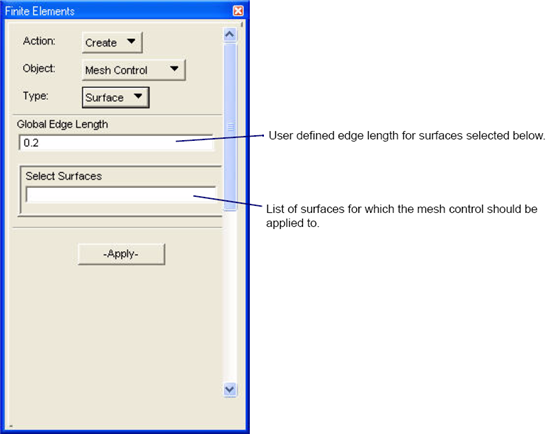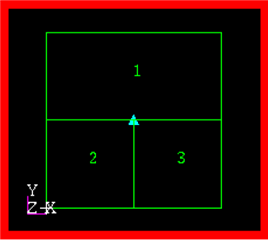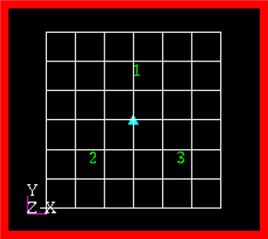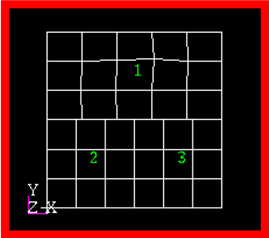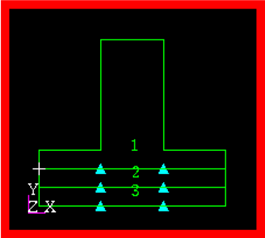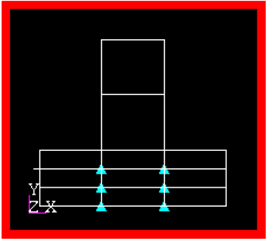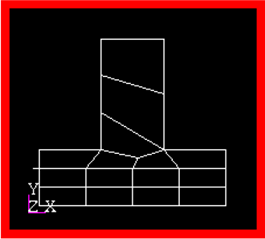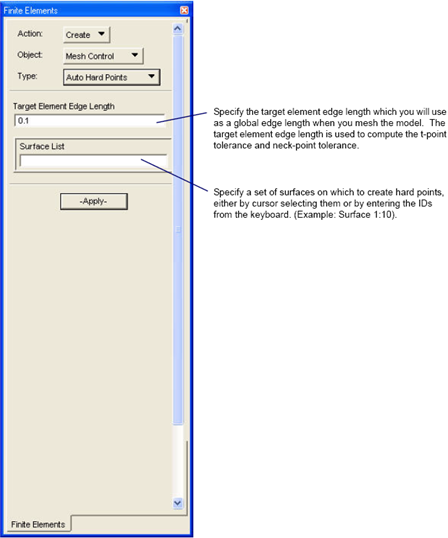XXXXXXXXXXXXXXXXXXXXXXXXXXXXXXXXXXXXXXXXXXXXXXXXXXXXXXXXXXXXXXXXXXXXXXXXXXXXXXXXXXXXXXXXXXXXXXXXXXXXXXXXXXXXXXXXXXXXXXXXXXXXXXXXXXXXXXXXXXXXXXXXXXXXXXXX''"> Mesh Control
Auto Hard Points Form
Using the Create/Mesh Control/Auto Hard Points form creates hard points on a specified set of surfaces automatically. This program creates hard points at two kinds of points on surface boundaries: T Points - A T point is defined as an interior point of a surface edge which is close to a vertex or an existing hard point on an edge in another surface within the t-point tolerance. The t-point tolerance is equal to one twentieth of the target element edge length. Placing a hard point at a T-point will help meshers create a congruent mesh on a noncongruent model. There is a noncongruent model in
Figure 2‑14. The auto hard point creation program creates a T-point at the T-junction of three surfaces and marks it by a small triangle. The new hard point forces the mesher to place a node at the T-junction when meshing surface 1 and the mesh created is a congruent mesh (
Figure 2‑15).
Figure 2‑16 shows the mesh without hard point creation.
Figure 2‑14 T-Point Creation
Figure 2‑15 Mesh with Hard Point Creation
Figure 2‑16 Mesh Without Hard Point Creation
Neck Points
A neck point is defined as an end point of a short cross section on a surface. A cross section on a surface is short if its length is less than the neck-point tolerance.The neck-point tolerance is equal to 1.5 times the target element edge length. Placing a hard point at a neck point will help meshers create better meshes on narrow surfaces. Neck points can be created recursively by neck-point propagation. In
Figure 2‑17, the two neck-points on the boundary of surface 1 were created first and the remain four neck points were created by neck point propagation from one small surface to another until the path reached the outer boundary of the model. The new hard points will help mesher line up the boundary nodes and create a good mesh on the narrow surfaces (
Figure 2‑18).
Figure 2‑19 shows the mesh without hard point creation.
Figure 2‑17 Neck Point Propagation
Figure 2‑18 Mesh with Hard Point Creation
Figure 2‑19 Mesh Without Hard Point Creation
